Traditionalist Issues
 |
 |
 |
 |
 |
 |
 |
Dialogue Mass - XCIV
The ‘Fathers’ of the Loreto Tradition
So far we have established that the Loreto tradition is founded, with or without written or printed documents, on the trustworthiness of human witnesses and their testimony of miracles. It rests on the principle of justice and charity that those responsible for relating the events in question must not be presumed to be liars and deceivers.
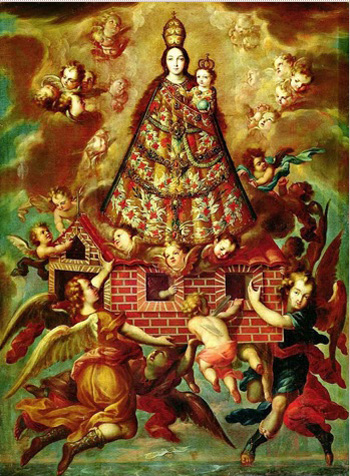 Interestingly, that presumption was made, as we shall see later, by Protestants and Liberal Catholics who dismissed as unconvincing whatever contradicted their own opinions, and refused to accept any evidence that conflicted with their preconceived notions of miracles.
Interestingly, that presumption was made, as we shall see later, by Protestants and Liberal Catholics who dismissed as unconvincing whatever contradicted their own opinions, and refused to accept any evidence that conflicted with their preconceived notions of miracles.
Let us trace the historical records that once existed, and give an overview of the principal historians (after Teramano) who used them to keep the Loreto tradition alive. They cited documents, still extant in their day, attesting to the miraculous translation of the Holy House in its different locations. The reasons why these writers were considered eminently worthy of belief and secured the patronage of successive Popes will also be addressed.
Girolamo Angelita
No one could have been more qualified to produce an authentic history of the Loreto tradition than the 16th-century archivist, Girolamo Angelita. As Chancellor of the Commune of Recanati from 1509 to 1561, he had access to all that remained in the archives of Recanati after many documents had been destroyed by fire in 1322. Like Teramano before him, he made a diligent examination of these; and he found other relevant documents in neighbouring towns and in the possession of private families of note.
But his greatest asset was the collection of manuscript copies of documents received by the magistrates of Recanati from Dalmatia concerning the first arrival of the Holy House in Tersatto in 1291. These were considered so important that they were sent to Pope Leo X.
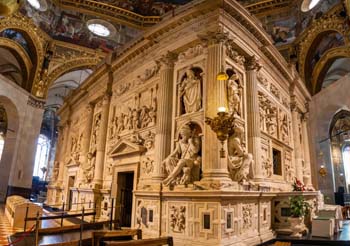 From these Angelita established that the parish priest of Tersatto, Fr. Alexander, had received a vision and a miraculous cure from Our Lady who explained the origin of the Holy House; that he went to Nazareth with three companions in 1291 to verify the dimensions of its foundations, and found them to correspond to the house at Tersatto; and that when the house disappeared, a local nobleman and benefactor, Count Nikola Frankopan, (1) ordered a church to be built over the site. By including these points in his work, (2) he established a well-documented link between mutually reinforcing testimonies from two different cultures, Dalmatia and Italy.
From these Angelita established that the parish priest of Tersatto, Fr. Alexander, had received a vision and a miraculous cure from Our Lady who explained the origin of the Holy House; that he went to Nazareth with three companions in 1291 to verify the dimensions of its foundations, and found them to correspond to the house at Tersatto; and that when the house disappeared, a local nobleman and benefactor, Count Nikola Frankopan, (1) ordered a church to be built over the site. By including these points in his work, (2) he established a well-documented link between mutually reinforcing testimonies from two different cultures, Dalmatia and Italy.
Angelita’s trustworthiness and integrity are beyond dispute and his reputation unimpeachable. His work was certified by local government officials, the magistrates of the town of Recanati of which he was the Secretary. St. Peter Canisius recommended him as “one remarkable for his sincerity and for his careful diligence in investigating the facts connected with the history in question.” (3) As a measure of his sincerity, Angelita dedicated and personally presented his manuscript to Pope Clement VII in 1531.
Jesuit defence of the Holy House
In the mid-16th century, Pope Julius III sent the Jesuits to Loreto to found a teaching College, and also entrusted the administration of the Sanctuary to them. (4) They remained there until the 18th century, staunchly defending papal teaching on the Holy House and looking after the spiritual and temporal welfare of the pilgrims.
Fr. Rafael Riera
Another valuable history of the Holy House was written in Latin by the Spanish Jesuit, Fr. Rafael Riera. His trustworthiness can be inferred from the fact that he was chosen personally by St. Ignatius to be one of ten men who founded the Jesuit College in Messina (Sicily) in 1548, and then to be one of the first Penitentiaries (Confessors) at Loreto in 1554. He remained there for the rest of his life, researching, collating and promoting the facts about the Holy House.
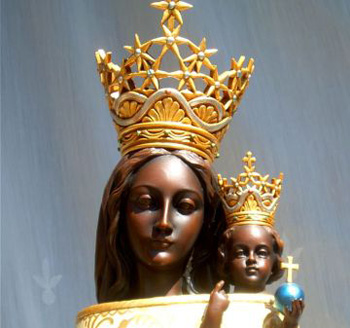
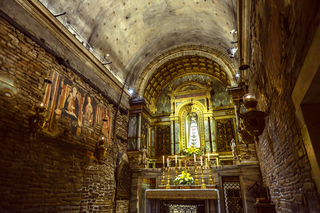 Of special significance is his declaration that he had obtained and read authentic copies of documents from the archives of the monastery of Tersatto, i.e., before these were destroyed by fire in 1629. The material he gathered formed the basis of his 1565 book, Historia Almae Domus Lauretanae, (5) written “for the glory of God and the Blessed Virgin.” (6)
Of special significance is his declaration that he had obtained and read authentic copies of documents from the archives of the monastery of Tersatto, i.e., before these were destroyed by fire in 1629. The material he gathered formed the basis of his 1565 book, Historia Almae Domus Lauretanae, (5) written “for the glory of God and the Blessed Virgin.” (6)
Riera’s account not only corroborates the historical accounts given by Teramano and Angelita, but adds fresh evidence as well. Let us consider some of his first-hand testimonies.
One example he relates is a moving incident that took place at the Loreto Sanctuary in 1559, and which, he assures his readers, he saw and heard “hisce oculis vidi & auribus excepi” (with my own eyes and ears). He was in the process of hearing confessions when he heard a commotion outside – a loud and public display of grief accompanied by much sobbing and wailing. When he looked out, he beheld a heart-rending scene.
Hundreds of men, women and children together with their priests had arrived on their annual pilgrimage from Fiume (the town of which Tersatto was a suburb), lamenting the loss of the Holy House which had been taken from them in 1294. After the door was opened, the whole company pressed forward “turmatim” (by troops, in squadrons) on their knees, with lighted candles in their hands, and entered the Sanctuary with continuous prayers and tears.
Not knowing their language, and wishing to know what they were saying, Fr. Riera addressed one of their priests in Latin for enlightenment who responded “Revertere, revertere Flumen Maria.” (Return, return to Fiume, O Mary) (7)
Apart from illustrating the usefulness of a universal language, this episode of the “losers weepers” who came mob-handed to Loreto clamoring for the return of the Holy House to their land, provides valuable corroborative evidence of the Loreto tradition. It shows, as Fr. Riera pointed out, that the inhabitants of the Slavic region where the Holy House once stood maintained their belief in its first arrival even after the passage of over 260 years.
As another example of first-hand experience, Riera relates that after Pope Clement VII had sent three of his own chamberlains to Loreto, Tersatto and Nazareth to report back on the status quo regarding the tradition, he managed to obtain a full account of their findings from one of the delegates. (8) This was the third deputation that took on-the-spot measurements of the walls of the Holy House in Loreto and found them to be an exact match to its foundations in Nazareth.
Added to these testimonies is Riera’s personal witness of many miracles performed at Loreto and which he records and describes in his history of the Sanctuary.
Fr. Orazio Torsellino
As with Fr. Riera, the Italian Jesuit, Fr. Torsellino, was sent to Loreto by St. Ignatius of Loyola, and became Rector of the Jesuit College there in 1584. His credentials as one of the Church’s finest intellectuals of the Counter-Reformation are noteworthy,(9) and made him an outstanding defender of the Holy House.
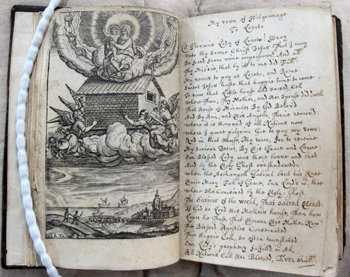 In his 5-volume Historia Lauretana (History of Loreto), published in 1597, Torsellino confirmed the accounts given by Teramano, Angelita and Riera of the translation of the Holy House by his own consultation of the archives in Recanati. He devoted a large section of his book to describing the numerous miracles that continued to be worked at Loreto and which received the all-important approbation of successive Popes.
In his 5-volume Historia Lauretana (History of Loreto), published in 1597, Torsellino confirmed the accounts given by Teramano, Angelita and Riera of the translation of the Holy House by his own consultation of the archives in Recanati. He devoted a large section of his book to describing the numerous miracles that continued to be worked at Loreto and which received the all-important approbation of successive Popes.
Thus he succeeded in placing Loreto on the international stage and assuring its future not just as a shrine attached to a particular locality but, in his own words, as the “common refuge of all peoples and nations.” (10) How misguided, then, was the judgement of the progressivist liturgical reformers in suppressing the Feast of the Translation of the Holy House in 1960 on the pretext of that it was an unimportant local cult.
St. Peter Canisius
One of St. Ignatius of Loyola’s first disciples, later named a Doctor of the Church, Canisius distinguished himself as the foremost champion of Catholic orthodoxy during the Reformation. It is not without significance that he was an ardent defender of the Loreto tradition against Protestant attacks against it.
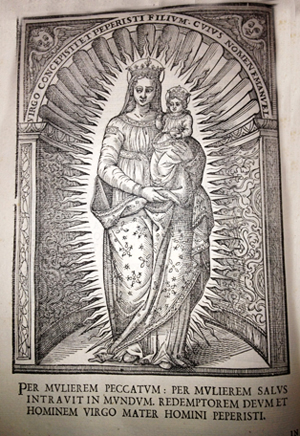 This can be seen in his work, De Maria Virgine Incomparabili, where he included a whole chapter on this subject, giving special attention to the “countless miracles” performed there. (11) So great was his devotion to the Holy House that he often visited the Shrine, and in 1558 produced the first printed text of the Litany of Loreto. (12)
This can be seen in his work, De Maria Virgine Incomparabili, where he included a whole chapter on this subject, giving special attention to the “countless miracles” performed there. (11) So great was his devotion to the Holy House that he often visited the Shrine, and in 1558 produced the first printed text of the Litany of Loreto. (12)
Fr. Franjo Glavinich
The clinching testimony of the authenticity of the Holy House was provided in 1648 by the Slavic priest, Fr. Glavinich, of the Franciscan Monastery of Tersatto where the original documents were kept before they were destroyed by fire in 1629. He averred that he had personally seen and made notes from the original document signed by the 4 delegates sent to Nazareth by Count Frangipane in 1291, and the testimony of the above-mentioned Fr. Alexander. (13)
To round off this brief account of the earliest historians of the Holy House, let us consider a fitting observation found in Illyricum Sacrum, an 8-volume work produced by Croatian and Italian Jesuits on the history of the Balkans. Having outlined the history of the Holy House on both sides of the Adriatic, the learned authors conclude:
“Apart even from all other arguments, the translation of the Holy House first into Dalmatia, and then into Italy, is placed beyond the reach of doubt by the most ancient, perpetual, constant and invariable agreement of the two nations; for it would have been impossible for Dalmatians and Italians, who are so widely divided from each other by language, character and an intervening sea, to agree together both in thought and word and writings with reference to that twofold translation, if it were not true and too certain to admit of question.” (14)
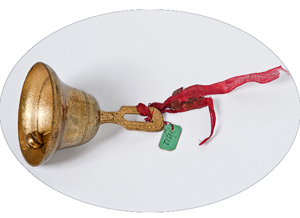 Continued
Continued


The Translation of the Holy House to Loreto
Let us trace the historical records that once existed, and give an overview of the principal historians (after Teramano) who used them to keep the Loreto tradition alive. They cited documents, still extant in their day, attesting to the miraculous translation of the Holy House in its different locations. The reasons why these writers were considered eminently worthy of belief and secured the patronage of successive Popes will also be addressed.
Girolamo Angelita
No one could have been more qualified to produce an authentic history of the Loreto tradition than the 16th-century archivist, Girolamo Angelita. As Chancellor of the Commune of Recanati from 1509 to 1561, he had access to all that remained in the archives of Recanati after many documents had been destroyed by fire in 1322. Like Teramano before him, he made a diligent examination of these; and he found other relevant documents in neighbouring towns and in the possession of private families of note.
But his greatest asset was the collection of manuscript copies of documents received by the magistrates of Recanati from Dalmatia concerning the first arrival of the Holy House in Tersatto in 1291. These were considered so important that they were sent to Pope Leo X.

The measurements of the Holy House in Italy correpond perfectly to the spot it left in Croatia
Angelita’s trustworthiness and integrity are beyond dispute and his reputation unimpeachable. His work was certified by local government officials, the magistrates of the town of Recanati of which he was the Secretary. St. Peter Canisius recommended him as “one remarkable for his sincerity and for his careful diligence in investigating the facts connected with the history in question.” (3) As a measure of his sincerity, Angelita dedicated and personally presented his manuscript to Pope Clement VII in 1531.
Jesuit defence of the Holy House
In the mid-16th century, Pope Julius III sent the Jesuits to Loreto to found a teaching College, and also entrusted the administration of the Sanctuary to them. (4) They remained there until the 18th century, staunchly defending papal teaching on the Holy House and looking after the spiritual and temporal welfare of the pilgrims.
Fr. Rafael Riera
Another valuable history of the Holy House was written in Latin by the Spanish Jesuit, Fr. Rafael Riera. His trustworthiness can be inferred from the fact that he was chosen personally by St. Ignatius to be one of ten men who founded the Jesuit College in Messina (Sicily) in 1548, and then to be one of the first Penitentiaries (Confessors) at Loreto in 1554. He remained there for the rest of his life, researching, collating and promoting the facts about the Holy House.

The Black Madonna of Loreto reigns on the altar of the Holy House to Loreto

Riera’s account not only corroborates the historical accounts given by Teramano and Angelita, but adds fresh evidence as well. Let us consider some of his first-hand testimonies.
One example he relates is a moving incident that took place at the Loreto Sanctuary in 1559, and which, he assures his readers, he saw and heard “hisce oculis vidi & auribus excepi” (with my own eyes and ears). He was in the process of hearing confessions when he heard a commotion outside – a loud and public display of grief accompanied by much sobbing and wailing. When he looked out, he beheld a heart-rending scene.
Hundreds of men, women and children together with their priests had arrived on their annual pilgrimage from Fiume (the town of which Tersatto was a suburb), lamenting the loss of the Holy House which had been taken from them in 1294. After the door was opened, the whole company pressed forward “turmatim” (by troops, in squadrons) on their knees, with lighted candles in their hands, and entered the Sanctuary with continuous prayers and tears.
Not knowing their language, and wishing to know what they were saying, Fr. Riera addressed one of their priests in Latin for enlightenment who responded “Revertere, revertere Flumen Maria.” (Return, return to Fiume, O Mary) (7)
Apart from illustrating the usefulness of a universal language, this episode of the “losers weepers” who came mob-handed to Loreto clamoring for the return of the Holy House to their land, provides valuable corroborative evidence of the Loreto tradition. It shows, as Fr. Riera pointed out, that the inhabitants of the Slavic region where the Holy House once stood maintained their belief in its first arrival even after the passage of over 260 years.
As another example of first-hand experience, Riera relates that after Pope Clement VII had sent three of his own chamberlains to Loreto, Tersatto and Nazareth to report back on the status quo regarding the tradition, he managed to obtain a full account of their findings from one of the delegates. (8) This was the third deputation that took on-the-spot measurements of the walls of the Holy House in Loreto and found them to be an exact match to its foundations in Nazareth.
Added to these testimonies is Riera’s personal witness of many miracles performed at Loreto and which he records and describes in his history of the Sanctuary.
Fr. Orazio Torsellino
As with Fr. Riera, the Italian Jesuit, Fr. Torsellino, was sent to Loreto by St. Ignatius of Loyola, and became Rector of the Jesuit College there in 1584. His credentials as one of the Church’s finest intellectuals of the Counter-Reformation are noteworthy,(9) and made him an outstanding defender of the Holy House.

Torsellino’s promise to go on pilgrimage to Loreto in his work Historia Lauretana
Thus he succeeded in placing Loreto on the international stage and assuring its future not just as a shrine attached to a particular locality but, in his own words, as the “common refuge of all peoples and nations.” (10) How misguided, then, was the judgement of the progressivist liturgical reformers in suppressing the Feast of the Translation of the Holy House in 1960 on the pretext of that it was an unimportant local cult.
St. Peter Canisius
One of St. Ignatius of Loyola’s first disciples, later named a Doctor of the Church, Canisius distinguished himself as the foremost champion of Catholic orthodoxy during the Reformation. It is not without significance that he was an ardent defender of the Loreto tradition against Protestant attacks against it.

A page from the work of St. Peter Canisius praising Our Lady
Fr. Franjo Glavinich
The clinching testimony of the authenticity of the Holy House was provided in 1648 by the Slavic priest, Fr. Glavinich, of the Franciscan Monastery of Tersatto where the original documents were kept before they were destroyed by fire in 1629. He averred that he had personally seen and made notes from the original document signed by the 4 delegates sent to Nazareth by Count Frangipane in 1291, and the testimony of the above-mentioned Fr. Alexander. (13)
To round off this brief account of the earliest historians of the Holy House, let us consider a fitting observation found in Illyricum Sacrum, an 8-volume work produced by Croatian and Italian Jesuits on the history of the Balkans. Having outlined the history of the Holy House on both sides of the Adriatic, the learned authors conclude:
“Apart even from all other arguments, the translation of the Holy House first into Dalmatia, and then into Italy, is placed beyond the reach of doubt by the most ancient, perpetual, constant and invariable agreement of the two nations; for it would have been impossible for Dalmatians and Italians, who are so widely divided from each other by language, character and an intervening sea, to agree together both in thought and word and writings with reference to that twofold translation, if it were not true and too certain to admit of question.” (14)

Welcome bell from the Holy House of Loreto
- The Frankopans (sometimes referred to as Frangipane) were a wealthy aristocratic Catholic family of landowners who settled in Tersatto in the 13th century, and controlled a large area of the Kingdom of Croatia.
- Girolamo Angelita, De Almae Domus Lauretanae in Agro Rachanatensi Mira Translatione Brevis et Fidelis Enarratio (A Brief and Faithful Account of the Miraculous Translation of the Holy House of Loreto to the Region of Recanati), in P.V. Martorelli, Teatro Istorico della Santa Casa Nazarena della B. Vergine Maria, 2 vols, Rome, 1732, vol. 1, p. 520. It had been written between 1525 and 1528.
- “Vir valde syncerus, ac rerum ad praesentem historiam pertinentium diligentissimus explorator”: P. Canisius, De Verbi Dei corruptelis (On the Corruptions of the Word of God), vol. 2: De Maria Virgine Incomparabili et Dei Genitrice Sacrosancta (On the Incomparable Virgin Mary and Most Holy Mother of God), Ingolstadt: David Sartorius, 1577, p. 726.
- Pope Julius III granted them a special privilege to absolve penitents of the sin of heresy, normally reserved to the Holy See. This encouraged an increase in pilgrims to Loreto from the “Reformation lands” of Northern Europe seeking forgiveness under the seal of the confessional rather than having to face the rigours of the Inquisition.
- This was published posthumously by Mgr. Pietro Martorelli in Teatro Istorico della Santa Casa Nazarena della B. Vergine Maria, 2 volumes, Rome, vol. 1, 1732, pp. 1-150.
- R. Riera, Historia Almae Domus Lauretanae, vol. 1, p. 21.
- Ibid., pp. 21-22.
- Ibid., p. 148.
- He taught Latin and Rhetoric in the Colleges of Rome, Florence and Loreto, and compiled a Latin grammar and manuals. Among his numerous writings was the first biography of St. Francis Xavier: De vita Francisci Xaverii qui primus è Societate Iesu in India, & Japonia Evangelium invexvit (The life of Francis Xavier, the first member of the Society of Jesus to bring the Gospel to India and Japan), Rome: Gaviana, 1594.
- Orazio Torsellino SJ, Dedication Letter to Cardinal Pietro Aldobrandini, Historia Lauretana, Rome: Aloysius Zannetti, 1557. The book was translated from Latin to English by Thomas Price, SJ, History of Our B. Lady of Loreto, St. Omer, English College Press, 1608.
- P. Canisius, De Maria Virgine Incomparabili et Dei Genitrice Sacrosancta, Ingolstadt: David Sartorius,1577, Book 5, chap. 25, p. 730: “Ea miracula tam multa sunt, ut nullo numero comprehendi.” (Those miracles are so numerous that they cannot be counted)
- This was published and circulated in Germany. The Dillingen copy is entitled: Letania Loretana. Ordnung der Letaney von unser lieben Frawen wie sie zu Loreto alle Samstag gehalten. (Order of the Litany of Our Lady as said every Saturday at Loreto) It is basically the same text as we have today, with a few additions over the centuries.
- F. Glavinich, Historia Tersattana, raccolta delle antiche, e moderne historie, annali, e traditioni (History of Tersatto, a collection of ancient and modern histories, annals and traditions), Udine: Nicola Schiaratti, 1648.
- Daniele Farlato SJ, Illyrici Sacri (usually known as “Illyricum Sacrum”), Venice: Coleti, vol. 4, 1769, p. 95.

Posted May 18, 2020
______________________
______________________
 Volume I |
 Volume II |
 Volume III |
 Volume IV |
 Volume V |
 Volume VI |
 Volume VII |
 Volume VIII |
 Volume IX |
 Volume X |
 Volume XI |
 Special Edition |


